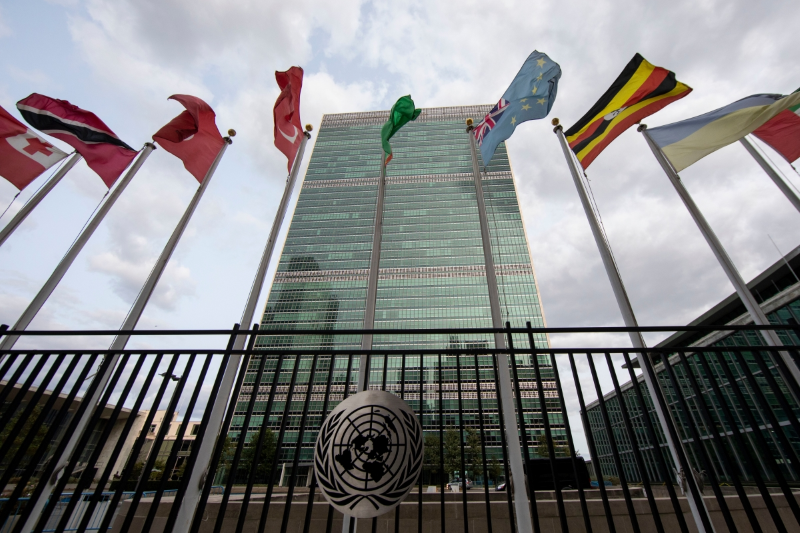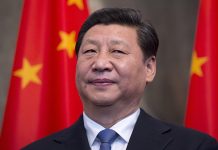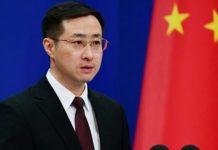“It is very dangerous for all the world that large numbers of people in the U.S. have closed their minds and are blind and deaf to the immense changes impacting the world. These Americans have also influenced some Europeans to share this approach,” Alistair Michie, Secretary General of the British East Asia Council, warned.
“These attitudes have a great impact. This comes from the reality that the nations of Europe and the U.S. have a dominant grip on global governance. Yet together the U.S. and Europe add up to less than 14 percent of the global population,” he said at a book launch hosted by the Center for China and Globalization (CCG) in Beijing on June 13.
As the world faces increasing uncertainties, including climate change, pandemic threats and global regulation of artificial intelligence, Michie called for consensus, not conflict in addressing these problems.
“Through understanding Chinese historical patterns, the people of China can see the value of not being provoked by those that display closed minds in the U.S. and Europe. Chinese readers can learn how many outside China have open minds and seek an intelligent dialogue with all of China,” he said.
At the event, David Blair, Vice President and senior economist at the CCG, recalled his own experience. “When the Cold War ended, I thought we were never going to get into the danger of a big power conflict again in Europe or in Asia. But we proved ourselves, or our leaders have proved themselves, to be stupid enough to do that again,” Blair said, adding it is important to build a consensus.
Where conflicts come from
The U.S. has been accusing China of violating the so-called “rules-based international order,” with U.S. Secretary of State Antony Blinken summing up U.S. sentiments on the issue in a policy speech delivered at George Washington University on May 26, 2022, saying “China’s government is undermining the global order that has allowed the country to flourish economically.”
A year later, on May 16, Blinken claimed “China represents the most consequential geopolitical challenge that we face today: A country with the intent and, increasingly, the capacity to challenge our vision for a free, open, secure and prosperous international order.”
“There is a phrase that we often hear these days, that is, the ‘rules-based international order.’ It is an ambiguous formulation that is not found in the UN Charter, not in any of the leaders’ declarations adopted by the UN, and not in any of the General Assembly or Security Council resolutions,” Chinese Ambassador to the UN Zhang Jun said at a UN Security Council open debate on international peace and security earlier this year.
Zhang followed with a string of questions: What kind of rules is the so-called “rules-based international order” based upon? Who creates these rules? And how are these rules related to the international order?
“We have yet to hear a definitive, unambiguous answer to these questions. What we have seen instead in reality is how the so-called rules-based approach pursued by some countries has plunged the world into immense trouble and chaos,” he noted.
Do China and the United States first agree on the definition of the international order before disputing issues relating to it? “It’s easier to understand disagreements over the international order today by first grasping the two approaches to it, the realist approach and the liberal one,” Da Wei, professor of international relations at Tsinghua University and Director of the university’s Center for International Security and Strategy, told China Newsweek.
China refers to the international order as a UN-centric one based on international law. It took shape after the UN Charter was enacted in 1945, enshrining the basic principles of sovereign equality, non-interference in internal affairs and other principles. “This is basically a realist approach, which deals with relations between nation states by reducing insecurity, power competition and anarchy,” Da said.
“The other approach is the liberal international order, a global and rules-based economic and political order established after the end of World War II, led in large part by the United States. As the Cold War ended, the order expanded into a global order, with the World Trade Organization (WTO) and other international institutions reaching out to the entire world, fueling globalization,” he added.
The future of global order
“The world is undergoing changes unseen in a century—China and the U.S. are involved in great power competition, the future of the Ukraine crisis remains uncertain, and we have been ambushed by the pandemic… These challenges are creating concern over the direction in which globalization is headed,” Su Hao, Director of the Center for Strategy and Peace Studies at China Foreign Affairs University, said at the book launch. “There’s a Western sentiment that globalization is dead. I partly agree, but the point is what do we mean by ‘globalization’?”
“I think it has three stages. The first started with the Age of Discovery when European major powers established their colonial empires to dominate the world and ended as the two world wars were waged. The wave of globalization was characterized by power and authority. The second began after World War II when nations were connected by global institutions, including the UN, the WTO and the World Bank. The West, the U.S. in particular, expanded its global political and financial clout at this stage. However, they are now becoming less able to lead the system.”
Su said he believes the third stage is just coming forth. While international relations are in a process of globalization, they are also moving more toward regional integration. Regions including Europe, East Asia, Africa and even North America have developed regional institutions to foster social integration and establish regional communities. More interactions will happen within regions and across regions, meaning each country will have more say in its region than it does in the global arena. “In other words, the West is losing control, so they believe globalization is dead. It’s not,” he said.
This year marks the 10th anniversary of the Belt and Road Initiative, a China-proposed initiative to boost connectivity along and beyond the ancient Silk Road routes. China’s trade with countries along the routes rose 19.4 percent year on year in 2022, and accounted for 32.9 percent of nation’s total foreign trade, up 3.2 percentage points. The Association of Southeast Asian Nations remained China’s largest trading partner that same year, followed by the European Union and the U.S., according to the General Administration of Customs of China.
During the China-Central Asia Summit in May in Xi’an, Shaanxi Province, the leaders announced a decision to officially inaugurate the China-Central Asia Summit Mechanism, in which the two sides will take turns to host the biennial summit. China and the five Central Asian countries agreed to promote in-depth cooperation across the board, with priorities given to transport, economy and trade, investment and industry, agriculture, energy, customs, and people-to-people exchanges.
“We need to adopt a long-term perspective in order to gain a deeper understanding of future developments,” Su concluded. –The Daily Mail-Beijing Review news exchange item





